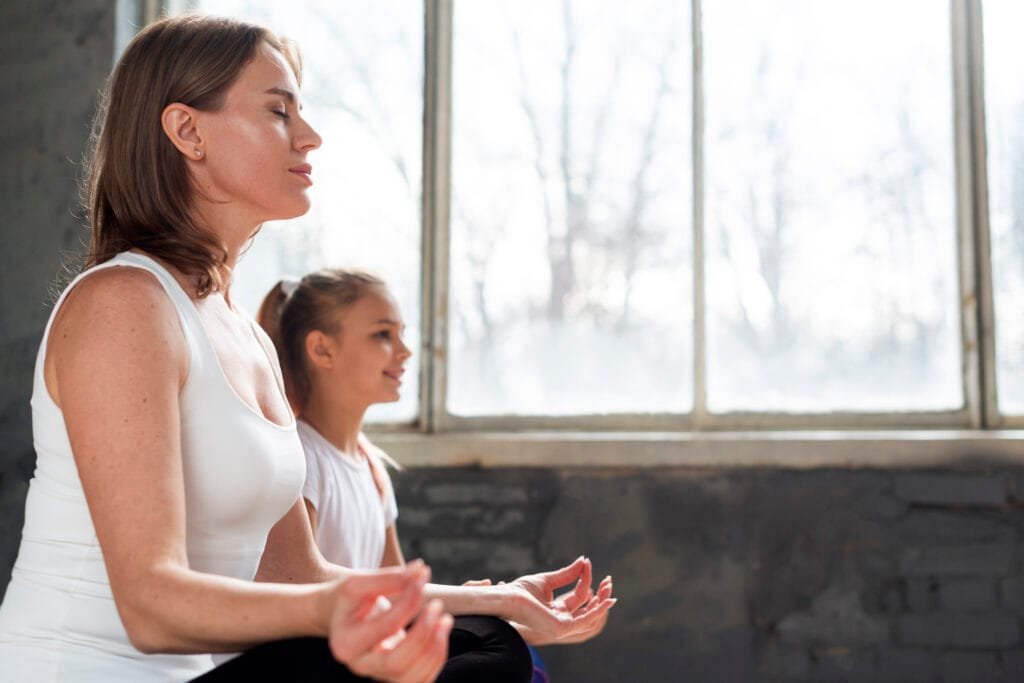Introduction
In today’s fast-paced and technologically connected world, children experience more complex emotions than ever. Understanding and managing these emotions creates the foundation for lifelong emotional health.
Parents face more and more intense emotional moments with their children every day. These moments test the parents’ patience but also create opportunities for connection and learning. Research shows that children who learn to manage their emotions early develop better social skills and mental health later in life.
In this post, I am giving practical, science-based strategies that help both, parents and children, navigate emotional challenges with confidence and compassion.

Understanding Your Child’s Emotional Brain
The science behind children’s emotional responses helps us respond with patience and wisdom.
The brain’s emotional centre (amygdala) develops before the rational part (prefrontal cortex). This explains why children react strongly to feelings before they can explain them. Dr. Dan Siegel, author of “The Whole-Brain Child,” states:
“When we help children name their emotions, we help them tame their emotions.”
Your inner critic might say: “My child should control their emotions by now.”
Replace this thought with: “Brain development is a gradual process, and my child needs support to learn emotional skills.”
- Use simple words to label emotions: “I see you feel angry because your tower fell”
- Draw simple faces showing different emotions
- Create an emotions chart together
- Notice and name your own feelings out loud
Understanding brain science gives us patience and helps us choose effective responses to emotional moments.
Creating a Safe Space for Feelings
Physical spaces shape emotional experiences. A dedicated calm space helps children feel secure and builds emotional regulation skills.
Children need physical and emotional safety to process big feelings. Set up a quiet corner with soft pillows and calming items. This space helps children learn self-regulation. Research from Yale Child Study Center shows that designated calming spaces reduce classroom disruptions by 60%.
Essential elements for a calm space:
- Soft cushions or blankets
- Squeeze balls or fidget toys
- Picture books about feelings
- Calming cards with simple exercises
- A feelings thermometer
Your inner critic might say: “My child is just being difficult.”
Replace this thought with: “My child is learning to handle complex emotions.”
Practice tip: Sit quietly with your child during emotional moments. Your presence provides security.
A well-designed calm space becomes a trusted tool for emotional regulation, giving children the confidence to face big feelings.

Simple Breathing Techniques for Children
Breathing exercises give children immediate tools for emotional regulation. These simple techniques work anywhere, anytime.
Deep breathing calms the nervous system. Research from the Child Mind Institute shows that breathing exercises reduce anxiety in children by 40%. Dr. Patricia Gerbarg notes:
“Breathing is like a remote control for your brain.”
Try these methods:
- Balloon breaths – Breathe in, expand your arms like a balloon, and slowly release
- Dragon breaths – Breathe in through the nose, breathe out with a “fire” sound
- Bear breaths – Inhale for 3 counts, hold for 2, exhale for 4
- Flower breaths – Smell the flower (inhale), blow the petals (exhale)
- Rainbow breaths – Draw a rainbow with arms while breathing
Regular breathing practice builds lasting emotional regulation skills that serve children throughout life.
Moving Through Emotions
Movement transforms emotional energy into positive action, helping children process feelings through their bodies.
Physical movement helps process feelings. Dr. Bruce Perry explains:
“Movement is medicine for creating change in a person’s emotional, mental, and physical states.”
Active emotional release techniques:
- Dance to express different feelings
- Jump rope while counting breaths
- Animal walks (stomp like an angry elephant)
- Shake and freeze games
- Running in place for 30 seconds
Your inner critic might say: “Physical activity makes children more excited.”
Replace this thought with: “Movement helps release emotional energy safely.”
Movement creates healthy pathways for emotional expression and builds body awareness.
Daily Mindfulness Habits
Small, consistent mindfulness practices create strong foundations for emotional intelligence and are easier to incorporate in daily life.
Small mindful moments create lasting emotional skills. Start with 2-minute practices:
- Morning gratitude sharing
- Bedtime feeling check-ins
- Mindful walking to school
- Quiet listening games
- Mindful eating moments
- Weather report of emotions
Dr. Jon Kabat-Zinn reminds us:
“The little moments? The little moments are everything.”
Practice tips:
- Start with one practice daily
- Keep sessions short (2-5 minutes)
- Join your child in practice
- Celebrate small wins
- Make it playful
Daily mindfulness builds emotional awareness naturally and creates special bonding moments.

Call to Action
Your journey to mindful parenting starts here. Take the next step toward supporting your child’s emotional growth.
Ready to transform emotional moments into opportunities for growth? Download your free copy of my “Mindful Living Method” with 3 simple exercises for emotional regulation. Sign up for my newsletter to receive expert guidance on mindful parenting directly in your inbox.
Remember:
“The way we talk to our children becomes their inner voice.” – Peggy O’Mara
Start your mindful parenting journey today. Your child’s emotional well-being awaits.




